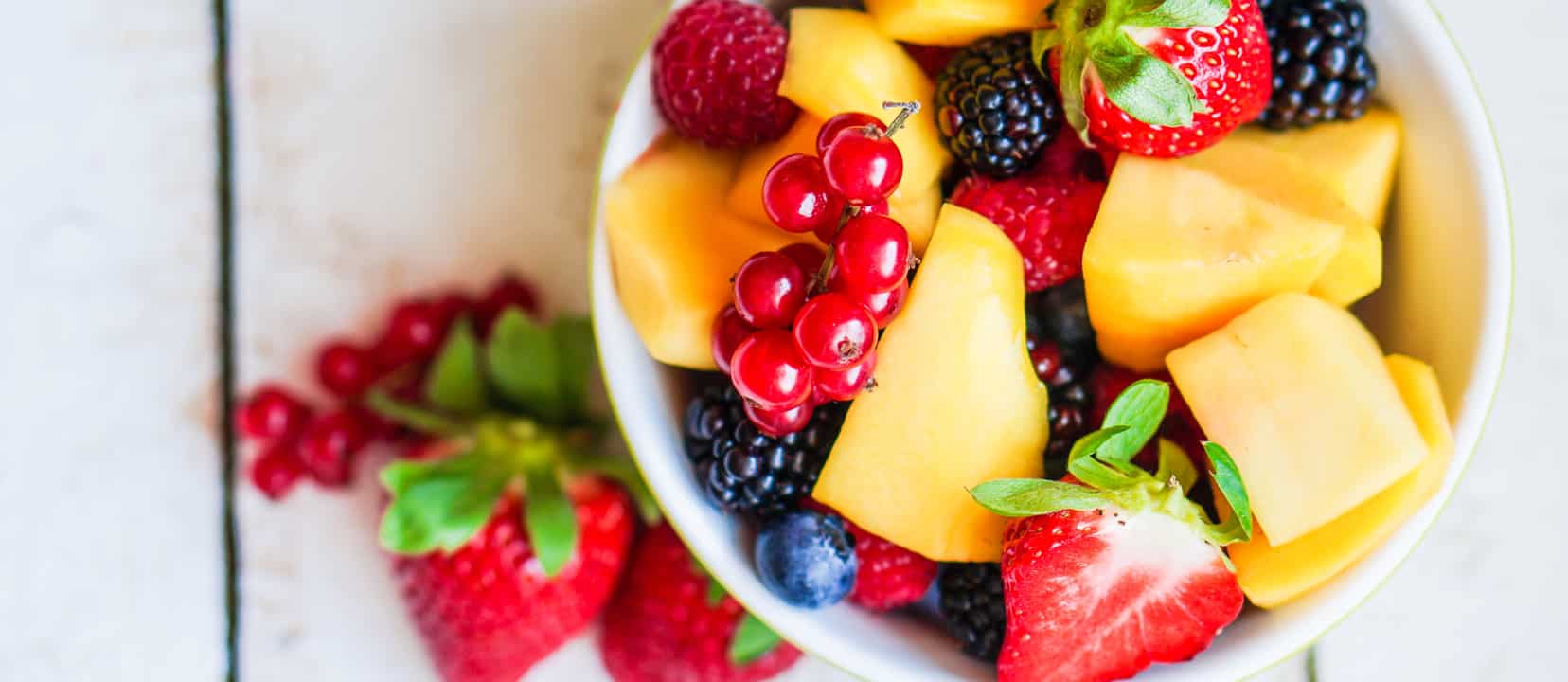If the fructose in sugar and high fructose corn syrup has been considered “alcohol without the buzz” in terms of the potential to inflict liver damage, what about the source of natural fructose, fruit?
If you compare the effects of a diet restricting fructose from both added sugars and fruit to one just restricting fructose from added sugars, the diet that kept the fruit did better. People lost more weight with the extra fruit present than if all fructose was restricted. Only industrial, not fruit fructose intake, was associated with declining liver function and high blood pressure. Fructose from added sugars was associated with hypertension; fructose from natural fruits is not.
If we have people drink a glass of water with three tablespoons of table sugar in it, which is like a can of soda, they get a big spike in blood sugar within the first hour (as you can see in my video If Fructose Is Bad, What About Fruit?). Our body freaks out and releases so much insulin we actually overshoot, and by the second hour we’re relatively hypoglycemic, dropping our blood sugar below where it was when we started out. In response, our body dumps fat into our blood stream as if we’re starving, because our blood sugars just dropped so low so suddenly.
What if you eat blended berries in addition to the sugar? They have sugars of their own in them; in fact, an additional tablespoon of sugar worth; so, the blood sugar spike should be worse, right?
Not only was there no additional blood sugar spike, there was no hypoglycemic dip afterwards. Blood sugar just went up and down without that overshoot and without the surge of fat into the blood.
This difference may be attributed to the semisolid consistency of the berry meals, which may have decreased the rate of stomach emptying compared with just guzzling sugar water. In addition, the soluble fiber in the berries has a gelling effect in our intestines that slows the release of sugars. To test to see if it was the fiber, researchers repeated the experiment with berry juice that had all the sugar but none of the fiber. A clear difference was observed early on in the blood sugar insulin responses. At the 15-minute mark, the blood sugar spike was significantly reduced by the berry meals, but not by the juices, but the rest of the beneficial responses were almost the same between the juice and the whole fruit, suggesting that fiber may just be part of it. It turns out there are fruit phytonutrients that inhibit the transportation of sugars through the intestinal wall into our blood stream. Phytonutrients in foods like apples and strawberries can block some of the uptake of sugars by the cells lining our intestines.
Adding berries can actually blunt the insulin spike from high glycemic foods. For example, white bread creates a big insulin spike within two hours after eating it. Eat that same white bread with some berries, though, and we’re able to blunt the spike. So, even though we’ve effectively added more sugars in the form of berries, there’s less of an insulin spike, which has a variety of potential short and long-term benefits. So, if you’re going to make pancakes, make sure they’re blueberry pancakes.
Surprised about the juice results? Me too! More on juice:
A few videos I have on industrial sugars:
How else can we blunt the glycemic spike?
- Beans and the Second Meal Effect
- The Best Way to Cook Sweet Potatoes
- Diabetics Should Take Their Pulses
- Preventing Prediabetes By Eating More
In health,
Michael Greger, M.D.
PS: If you haven’t yet, you can subscribe to my free videos here and watch my live, year-in-review presentations—2013: Uprooting the Leading Causes of Death, More Than an Apple a Day, 2014: From Table to Able: Combating Disabling Diseases with Food, 2015: Food as Medicine: Preventing and Treating the Most Dreaded Diseases with Diet, and my latest, 2016: How Not To Die: The Role of Diet in Preventing, Arresting, and Reversing Our Top 15 Killers.
